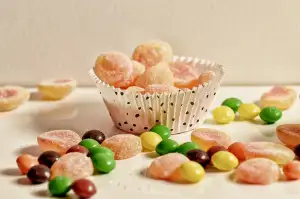Say Goodbye to Fruit Flies: The Ultimate Fruit Fly Trap for Your Home

Fruit flies are a common nuisance in homes, especially during the warmer months. These tiny pests are attracted to ripe or fermenting fruits and vegetables, as well as sugary substances like juice and soda. Fruit fly traps are an effective way to control and eliminate these pesky insects without the use of harmful chemicals. By luring fruit flies into traps with enticing baits, such as apple cider vinegar or ripe fruit, you can significantly reduce their population in your home. In this article, we will explore the benefits of using fruit fly traps and provide tips on how to choose and set up the best trap for your needs.
Benefits of Using Fruit Fly Traps
Fruit fly traps offer numerous advantages for homeowners. Firstly, they help in controlling fruit fly populations, preventing infestations in the kitchen and other areas of the home. By trapping adult fruit flies, these devices can significantly reduce the number of eggs laid by female flies, thus curbing their reproduction cycle.
Additionally, fruit fly traps are non-toxic and safe to use around food preparation areas, making them an eco-friendly alternative to chemical insecticides. They are also cost-effective and easy to set up, requiring minimal effort for maximum results. Fruit fly traps are highly efficient at capturing these pesky insects, helping to maintain a clean and hygienic environment in your home.
Different Types of Fruit Fly Traps
When it comes to dealing with fruit flies, there are several types of traps available on the market. One common type is the liquid trap, which uses a liquid attractant to lure fruit flies in and prevent them from escaping. Another popular option is the vinegar trap, where apple cider vinegar or red wine serves as the bait to attract and trap fruit flies. Sticky traps are also effective, using adhesive surfaces to catch fruit flies as they land on them. Additionally, there are commercial fly traps that use pheromones to attract and capture fruit flies effectively. Each type of trap has its own advantages and may be more suitable for different situations within your home.
DIY Fruit Fly Trap Recipes
1. Apple Cider Vinegar Trap: Pour apple cider vinegar into a jar or bowl and cover it with plastic wrap. Secure the plastic wrap with a rubber band and poke small holes in it. The fruit flies will be attracted to the vinegar but will not be able to escape.
2. Red Wine Trap: Place some red wine in a container and add a few drops of dish soap. The soap breaks the surface tension of the wine, causing the fruit flies to drown when they land on it.
3. Banana Trap: Take a ripe banana and mash it in a bowl. Cover the bowl with plastic wrap and poke holes in it. Fruit flies will be drawn to the banana scent but will get trapped inside.
These DIY traps are effective, non-toxic, and easy to make using common household items.
How to Set Up and Use a Fruit Fly Trap
To set up and use a fruit fly trap, start by choosing a location where fruit flies are most active, typically near fruits or vegetables. Fill the trap with an attractant like apple cider vinegar or a piece of ripe fruit. Add a drop of dish soap to break the surface tension of the liquid, making it difficult for the flies to escape. Place the trap near the infested area but away from food preparation areas. Check the trap regularly and empty it once it's filled with fruit flies. Repeat this process until you no longer see any fruit flies in your home.
Maintenance and Cleaning Tips for Fruit Fly Traps
Maintenance and cleaning are essential to ensure the effectiveness of your fruit fly trap. Regularly check the trap for any trapped flies and empty it as needed to prevent overflow. Clean the trap with warm soapy water to remove any residue that may deter fruit flies from entering. Avoid using harsh chemicals or cleaners that could contaminate the trap and deter fruit flies. It's recommended to replace the bait in your trap every 1-2 weeks, as it may lose its potency over time. By keeping your fruit fly trap clean and well-maintained, you can effectively control fruit fly populations in your home.
In conclusion, fruit fly traps are essential tools for maintaining a fruit fly-free environment in your home. By using these traps, you can effectively control and eliminate fruit fly infestations without the need for harmful chemicals. Whether you opt for a store-bought trap or a DIY solution, the key is to regularly clean and maintain the trap to ensure its effectiveness. Remember, prevention is key when it comes to dealing with fruit flies, so be proactive in keeping your kitchen clean and your fruits stored properly. With the right approach, you can say goodbye to fruit flies and enjoy a pest-free living space.
Published: 31. 03. 2024
Category: Home



